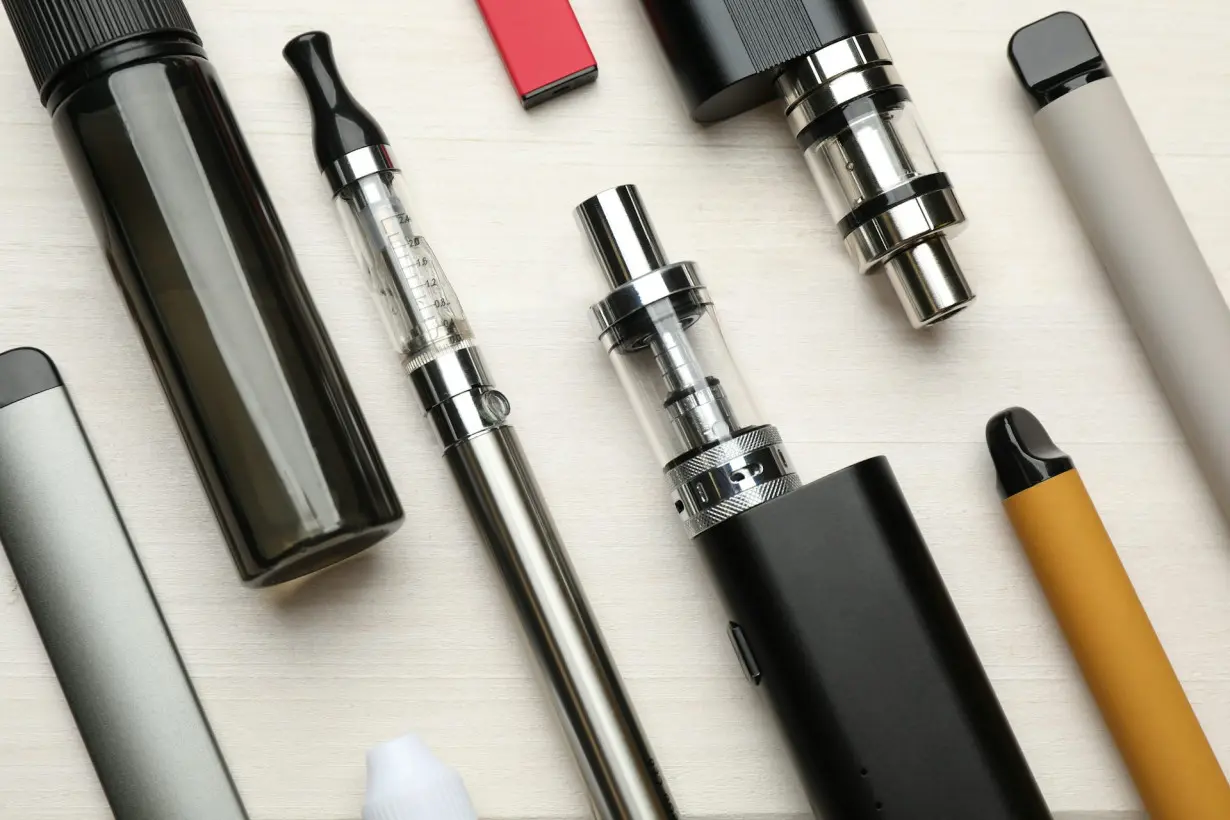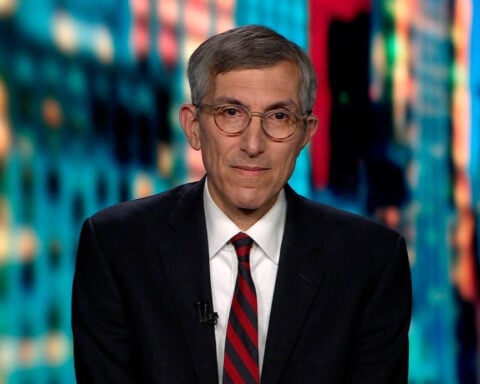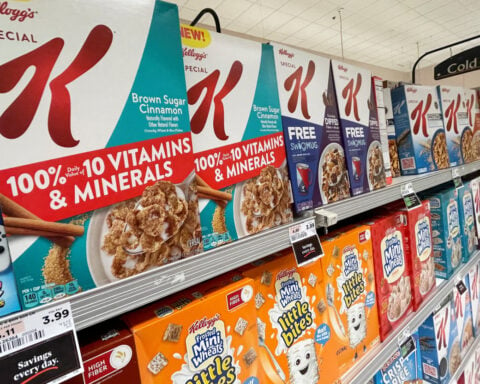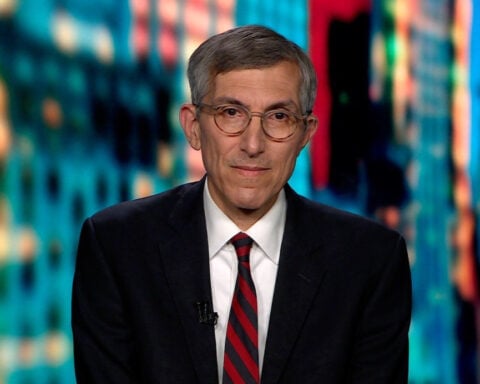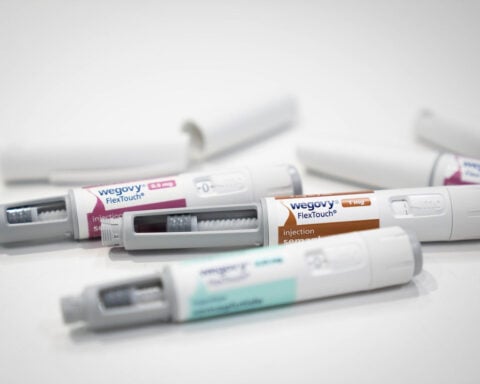On June 21, 2024, the U.S. Food and Drug Administration authorized the marketing of the first electronic cigarette products in flavors other than tobacco in the U.S. Of the four new authorized products, two are sealed, prefilled pods with menthol flavored nicotine liquid that can be used in certain types of e-cigarettes. The other two are disposable nicotine e-cigarettes – meaning once the prefilled menthol liquid is used, the device cannot be used again.
The Conversation asked Jamie Hartmann-Boyce, a health policy expert who specializes in tobacco control and e-cigarette products, to explain the pros and cons of the FDA’s authorization and what it could mean for vulnerable populations.
What does the new announcement from the FDA mean?
E-cigarettes, also known as vapes, are hand-held, battery-operated devices that heat a liquid to form a vapor that can be inhaled. This vapor can be manufactured to include flavors. Unlike traditional cigarettes, e-cigarettes do not contain tobacco leaf. E-cigarettes can – but don’t always – contain nicotine.
Until June 21, the only nicotine e-cigarettes authorized for sale in the U.S. were tobacco-flavored. Some organizations, including some tobacco industry advocates, described this as a “de facto flavor ban.”
The Centers for Disease Control and Prevention defines menthol as a chemical compound found naturally in peppermint and other similar plants.
This is the first time the FDA has authorized marketing of an e-cigarette flavor other than tobacco. “Tobacco flavor” describes a range of flavors that are designed to taste similar to traditional cigarettes.
What are the potential harms, such as risks to kids?
Tobacco companies have historically added menthol to traditional cigarettes to make them seem less harsh and more appealing. Tobacco companies have aggressively marketed menthol cigarettes to Black people. In 2022, the FDA proposed a ban on menthol cigarettes based on their appeal, including to youth, and the potential of such a ban to improve health and prevent deaths. But the proposal has stalled.
Research shows that nontobacco, e-liquid flavors are more appealing than tobacco flavors, including to young people. The FDA has previously denied applications for menthol e-cigarettes, stating that the applications “did not present sufficient scientific evidence to show that the potential benefit to adult smokers outweighs the risks of youth initiation and use.”
How are e-cigarettes regulated in the US?
In the U.S, e-cigarettes with nicotine fall under the authority of the FDA’s Center for Tobacco Products. For their products to be legally marketed and sold in the U.S., e-cigarette manufacturers must apply for marketing authorization from the FDA.
The FDA evaluates these applications based on the scientific evidence provided by the manufacturers. To be approved, the applications must demonstrate that permitting marketing of the products would be appropriate for protection of public health.
This means the FDA needs to weigh whether the potential benefits of the product – in other words, its ability to help adults quit smoking – outweigh its risks, including its appeal to youth. Though not risk-free, e-cigarettes are considered much less harmful than smoking. This means that adults who switch from smoking to vaping may benefit from improvements in their health.
The FDA’s authorization of menthol-flavored e-cigarettes underscores the growing body of evidence that vaping can reduce the harms of traditional smoking. But many experts are concerned that the new products will entice more young people and nonsmokers to begin vaping and smoking.
Weren’t flavored vapes already available in the US?
Even though only tobacco e-liquids were authorized for sale before this new announcement, many Americans report using flavored e-liquids, with sweet, fruit and mint and menthol flavors being the most popular. This is in part because many vaping products available in the U.S. haven’t been authorized for marketing or sale. These are referred to as illicit products. In addition, some of the products currently available are still being reviewed by the FDA.
Many of the harms the public associates with vaping – such as the serious vaping-related lung injuries that were widely reported in 2019 and 2020 – have been linked to illicit products and the harmful chemicals some contain, which are not present in FDA-authorized products. Earlier in June, the Justice Department and FDA announced a federal multi-agency taskforce to curb distribution and sale of illegal e-cigarettes. Meanwhile, the U.S. is awash in sleek, colorful and highly potent vapes manufactured in China.
What are the potential health effects?
The best available research doesn’t show any clear differences between menthol and tobacco flavored e-liquid in terms of direct health risks to users.
As mentioned above, research suggests that nontobacco e-liquid flavors are more appealing than tobacco-flavored ones, at least in some groups. This might mean an increase in the risk of nonsmoking youth taking up vaping. But it might also encourage people who smoke to switch to vaping, which can pose fewer risks than smoking. Quitting smoking can also improve the health of other people, by reducing secondhand smoke exposure.
Smoking kills half of its regular users and is the leading cause of preventable death in the U.S. and worldwide. So alternatives that increase chances of successfully quitting smoking can bring substantial health benefits.
To grant authorization for the four new approved products, the FDA had to review an extensive amount of documents and research showing that the benefits of the new products outweighed their risks.

Jamie Hartmann-Boyce receives funding from the National Institutes of Health, the US Food and Drug Administration, and Cancer Research UK, on topics related to tobacco control. She sits on Health Canada's Scientific Advisory Board on Vaping Products and consults for the Truth Initiative.
Source: The Conversation

 Trump has begun another trade war. Here's a timeline of how we got here
Trump has begun another trade war. Here's a timeline of how we got here
 Canada's leader laments lost friendship with US in town that sheltered stranded Americans after 9/11
Canada's leader laments lost friendship with US in town that sheltered stranded Americans after 9/11
 Chinese EV giant BYD's fourth-quarter profit leaps 73%
Chinese EV giant BYD's fourth-quarter profit leaps 73%
 You're an American in another land? Prepare to talk about the why and how of Trump 2.0
You're an American in another land? Prepare to talk about the why and how of Trump 2.0
 Chalk talk: Star power, top teams and No. 5 seeds headline the women's March Madness Sweet 16
Chalk talk: Star power, top teams and No. 5 seeds headline the women's March Madness Sweet 16
 Purdue returns to Sweet 16 with 76-62 win over McNeese in March Madness
Purdue returns to Sweet 16 with 76-62 win over McNeese in March Madness
